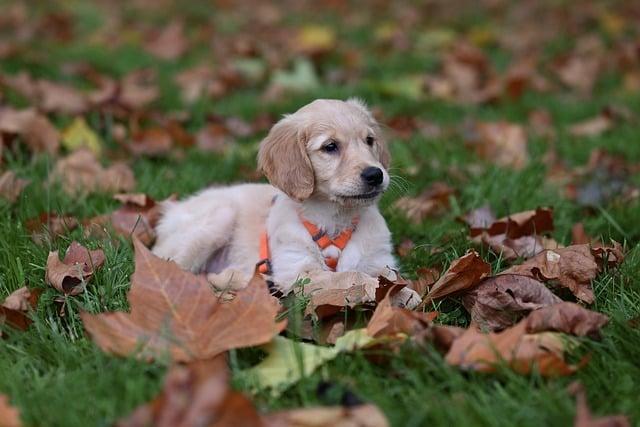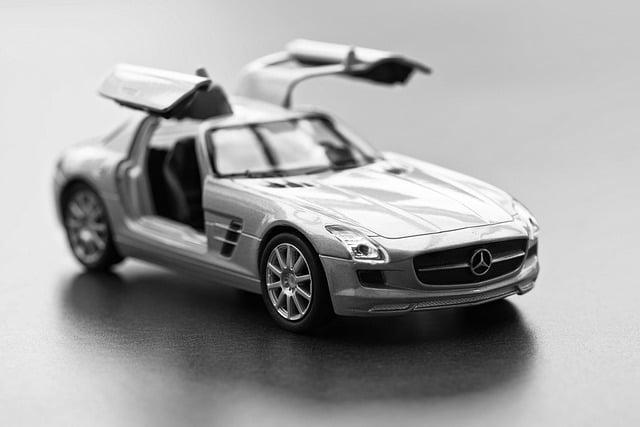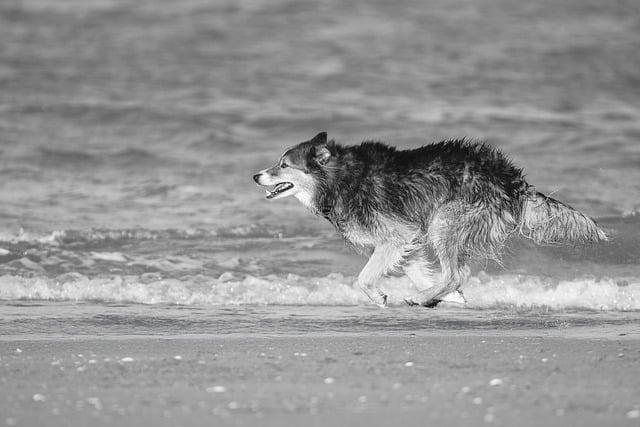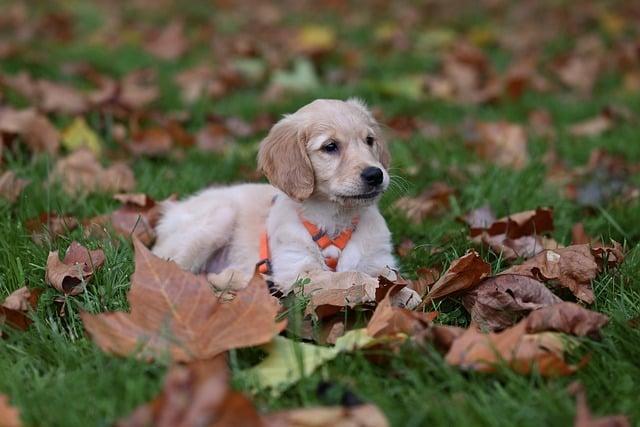Max, a spirited golden retriever, once had a favorite squeaky toy. Day after day, he’d pounce and play, but soon, the excitement faded. His owner, Sarah, noticed Max’s disinterest and decided to switch things up. She introduced new toys and even rotated the old ones. Suddenly, Max was back to his playful self, joyfully rediscovering his once-beloved squeaky toy. This experience highlights a crucial truth: dogs can indeed get bored of their toys. To keep their spirits high and minds engaged, regular variety is essential!
Contents
- Understanding Canine Boredom and Its Impact on Playtime
- Identifying Signs That Your Dog Is Losing Interest in Toys
- Innovative Strategies to Revitalize Your Dogs Toy Collection
- Choosing the Right Toys to Keep Your Dog Engaged and Stimulated
- Q&A
Understanding Canine Boredom and Its Impact on Playtime
Canine boredom is a subtle yet significant issue that can affect your dog’s overall well-being and behavior. Just like humans, dogs can experience a lack of stimulation, leading to feelings of restlessness and frustration. When a dog becomes bored, it may resort to destructive behaviors, such as chewing furniture or excessive barking, as a way to cope with its unfulfilled need for engagement. Understanding this phenomenon is crucial for pet owners who want to ensure their furry companions remain happy and healthy.
One of the primary indicators of boredom in dogs is their reaction to toys. If your dog seems disinterested in its favorite playthings, it may be a sign that the novelty has worn off. Dogs thrive on variety and mental stimulation, so a rotation of toys can keep their interest piqued. Consider introducing new textures, shapes, and interactive elements to their playtime routine. This not only keeps them engaged but also encourages physical activity, which is essential for their health.
Moreover, the impact of boredom extends beyond just playtime. A bored dog may exhibit signs of anxiety, leading to a cycle of behavioral issues that can be challenging to manage. To combat this, it’s essential to incorporate a mix of physical exercise and mental challenges into their daily routine. Activities such as puzzle toys, scent games, and agility training can provide the stimulation they crave, fostering a more balanced and contented pet.
recognizing the signs of boredom and taking proactive steps to address it can transform your dog’s playtime experience. By investing time in understanding your dog’s preferences and needs, you can create a more enriching environment that promotes happiness and well-being. Remember, a well-stimulated dog is not only a joy to be around but also less likely to engage in unwanted behaviors, making for a harmonious household.
Identifying Signs That Your Dog Is Losing Interest in Toys
As a devoted dog owner, it’s essential to stay attuned to your furry friend’s preferences and behaviors. One of the most telling signs that your dog may be losing interest in their toys is a noticeable decline in playtime enthusiasm. If your pup once eagerly pounced on their favorite squeaky toy but now merely glances at it before walking away, it could indicate boredom. Pay attention to how often they engage with their toys; a sudden drop in interaction can be a red flag.
Another sign to watch for is a shift in play style. Dogs often have distinct ways of playing, whether it’s chewing, fetching, or tugging. If your dog seems to be playing less vigorously or is opting for a more subdued approach, it might be time to reassess their toy collection. **Look for behaviors such as:**
- Reduced excitement when a toy is presented
- Choosing to play with household items instead of their toys
- Ignoring toys that were once favorites
Additionally, consider the condition of the toys themselves. If your dog’s toys are worn out, torn, or have lost their squeak, they may no longer hold the same appeal. Dogs are naturally attracted to new textures and sounds, so a toy that has seen better days might not spark their interest. **Examine your dog’s toys for:**
- Visible signs of wear and tear
- Lack of engaging features, like squeakers or crinkles
- Familiarity that leads to disinterest
observe your dog’s overall behavior during playtime. If they seem distracted, disinterested, or even frustrated, it may be a sign that their toys are no longer stimulating. Dogs thrive on mental and physical engagement, so a lack of enthusiasm can indicate that they need new challenges. **Consider these behavioral cues:**
- Frequent sniffing around instead of playing
- Excessive pacing or wandering away from play
- Seeking attention from you rather than engaging with toys
Innovative Strategies to Revitalize Your Dogs Toy Collection
Keeping your dog’s toy collection fresh and exciting is essential for their mental stimulation and overall happiness. One effective strategy is to rotate their toys regularly. By designating a few toys as “in-season” and storing the rest away, you can create a sense of novelty. When you reintroduce the stored toys, your dog will likely react as if they are brand new, reigniting their interest and enthusiasm.
Another innovative approach is to incorporate interactive toys that challenge your dog’s problem-solving skills. **Puzzle toys** and **treat-dispensing gadgets** not only keep your dog engaged but also provide mental exercise. These toys can be filled with treats or kibble, encouraging your dog to think critically about how to access the rewards. This added layer of complexity can significantly reduce boredom and enhance their playtime experience.
Consider personalizing your dog’s toy collection to cater to their unique preferences. Observe which types of toys they gravitate towards—whether they prefer squeaky toys, plush toys, or balls. You can also create DIY toys using household items, such as old t-shirts braided into a tug toy or a tennis ball with treats hidden inside. **Customization** not only makes playtime more enjoyable but also strengthens the bond between you and your furry friend.
Lastly, engage your dog in playtime activities that involve you. **Interactive games** like fetch, hide-and-seek, or tug-of-war can make even the simplest toys feel new and exciting. By participating in their play, you not only provide physical exercise but also enhance their emotional well-being. Remember, the key to a vibrant toy collection is variety and engagement, ensuring your dog remains stimulated and happy.
Choosing the Right Toys to Keep Your Dog Engaged and Stimulated
When it comes to keeping your furry friend entertained, the right toys can make all the difference. Dogs, much like humans, thrive on mental and physical stimulation. Selecting toys that cater to their natural instincts can help prevent boredom and promote a healthy lifestyle. Consider toys that encourage problem-solving, such as puzzle feeders or treat-dispensing balls, which challenge your dog to think critically while rewarding them with tasty treats.
Another important factor to consider is the durability of the toys. Dogs, especially those with strong jaws or high energy levels, can quickly destroy flimsy toys. Opt for **high-quality materials** that can withstand vigorous play. Look for options like rubber or nylon, which are designed for tough chewers. Additionally, rotating toys regularly can keep your dog’s interest piqued. By introducing new toys or reintroducing old favorites, you can create a sense of novelty that keeps playtime exciting.
Interactive toys are also a fantastic choice for engaging your dog. These toys often require your pet to work for their rewards, which can be incredibly satisfying for them. **Fetch toys, tug ropes, and agility equipment** not only provide physical exercise but also foster a deeper bond between you and your dog through shared activities. Incorporating playtime into your daily routine can significantly enhance your dog’s happiness and reduce feelings of boredom.
Lastly, consider your dog’s individual preferences and personality when selecting toys. Some dogs may prefer soft toys they can cuddle with, while others might enjoy squeaky toys that stimulate their hunting instincts. Pay attention to your dog’s reactions and adjust your choices accordingly. By being attentive to their likes and dislikes, you can create a diverse toy collection that keeps them engaged and mentally stimulated, ensuring they never experience the dullness of boredom.
Q&A
-
Do dogs get bored of their toys?
Yes, dogs can get bored of their toys, especially if they play with the same ones repeatedly. Just like humans, dogs thrive on variety and stimulation. Rotating their toys can keep their interest piqued and encourage more active play.
-
How can I tell if my dog is bored with their toys?
Signs of boredom in dogs may include disinterest in their toys, reduced playtime, or seeking attention from you instead. If your dog is ignoring their toys or seems less energetic, it might be time to introduce new options.
-
What types of toys can help prevent boredom?
Interactive toys, puzzle feeders, and toys that dispense treats can engage your dog mentally and physically. Additionally, toys that squeak or have varied textures can provide new sensory experiences that keep your dog entertained.
-
How often should I change my dog’s toys?
It’s beneficial to rotate your dog’s toys every few weeks. This keeps their playtime fresh and exciting. Introducing new toys or reintroducing old ones can reignite their interest and encourage more active play.
understanding your dog’s play preferences is essential for their happiness. By rotating toys and introducing new ones, you can keep their interest piqued and their minds engaged. A stimulated dog is a happy dog—let’s keep their tails wagging!

大家好,我是彼得潘,專業的手法身體治療師。我喜歡探索和研究各種主題,並透過與人工智慧的合作分享專業、實用、有趣的文章。我們定期進行人工審核,以確保內容的準確性。如果您發現文章中有任何不準確的地方,請隨時與我們聯繫,我們會及時糾正。您可以透過 [email protected] 與我們聯繫。



